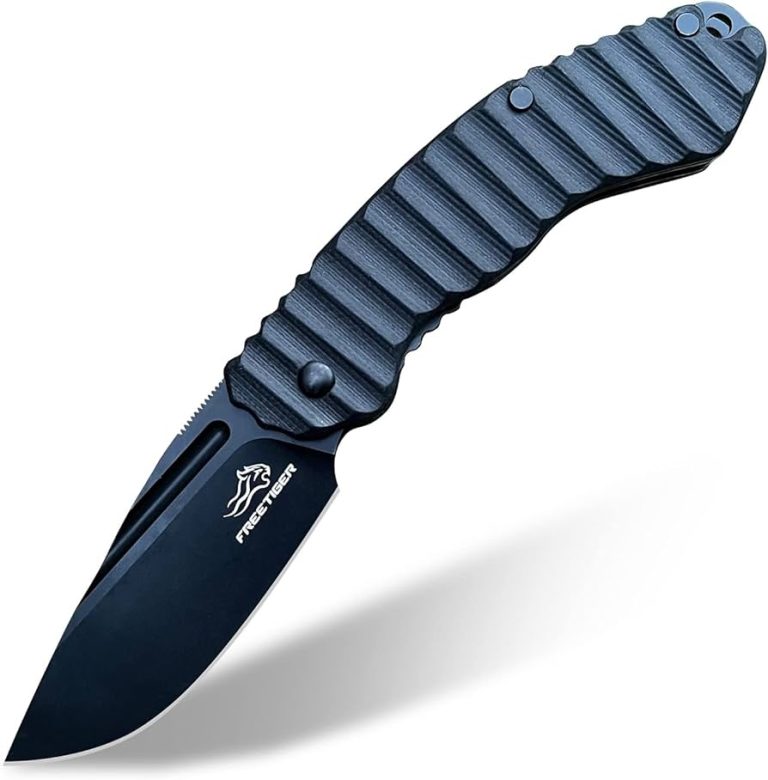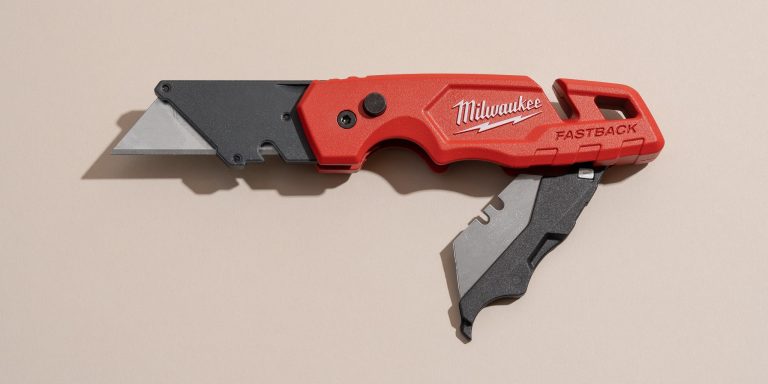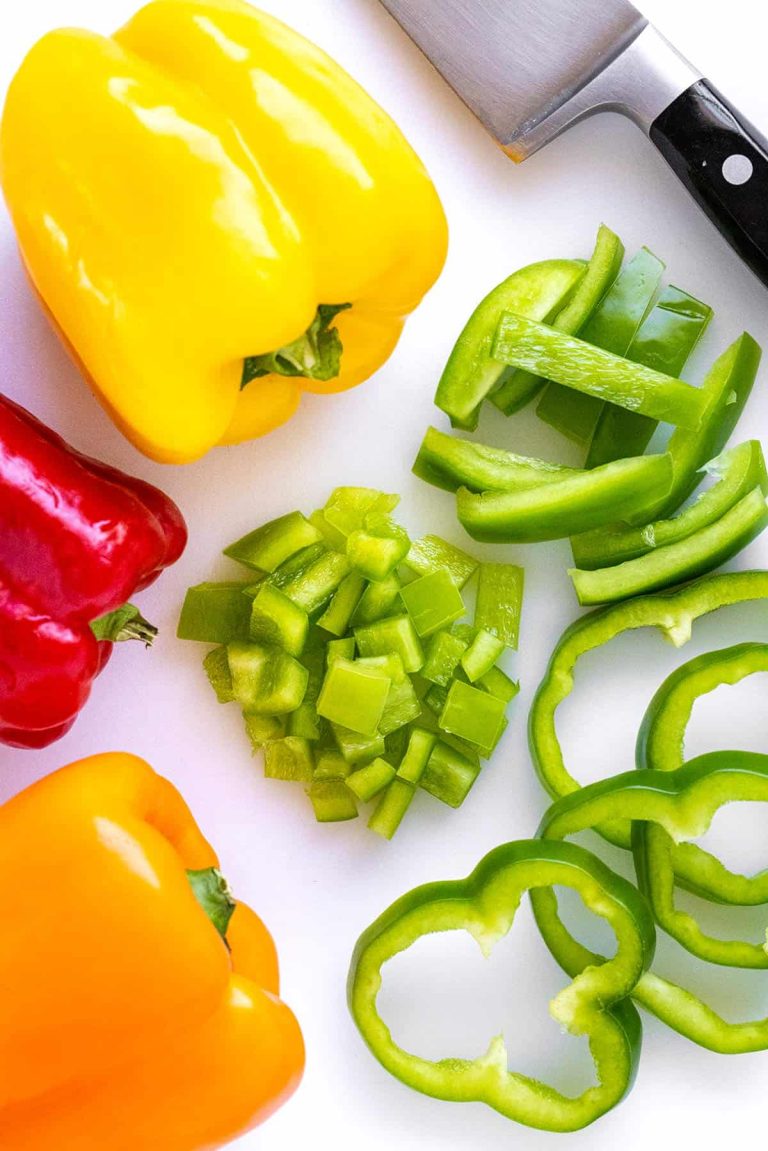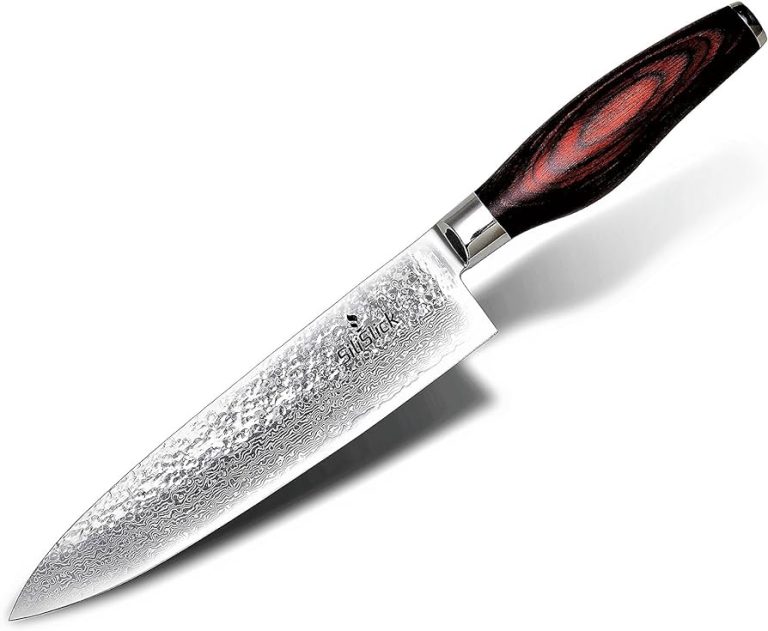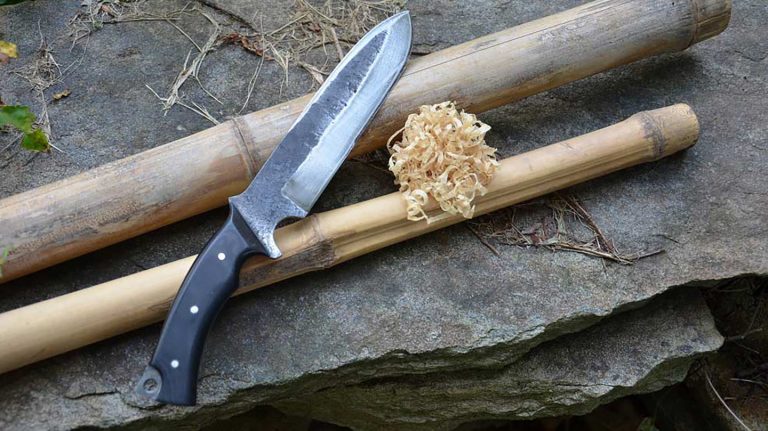The Anatomy of a Great Fishing Knife
A great fishing knife has specific features that make it efficient and reliable, such as a sharp blade, a durable handle, and a corrosion-resistant material. In addition, its size should be appropriate for different fishing tasks, making it versatile and easy to handle.
This article explores the essential elements of a great fishing knife and why they are important for anglers. Whether you are a professional fisherman or an occasional angler, having the right fishing knife can greatly enhance your fishing experience. From filleting fish to cutting lines, a well-designed fishing knife is an essential tool that every angler should have in their tackle box.
Read on to discover the anatomy of a great fishing knife and what to consider when choosing one for your fishing adventures.
Understanding The Components
A great fishing knife comprises various essential components, including a sharp blade, durable handle, and corrosion-resistant materials. Each element contributes to the knife’s functionality and longevity, making it an indispensable tool for any angler.
The Anatomy Of A Great Fishing Knife:
A reliable fishing knife is an essential tool for any angler. Not only does it come in handy for cleaning and filleting fish, but it can also serve multiple purposes while out on the water. To fully grasp the qualities that make up a great fishing knife, it’s crucial to understand its various components.
Let’s dive into the key elements that contribute to the overall effectiveness and performance of a fishing knife.
Blade Design:
A well-designed blade is the heart and soul of a fishing knife. Here are the key aspects to consider when assessing the blade design:
- Blade Shape: Different fishing applications call for varying blade shapes. The three primary blade shapes are straight, curved, and serrated. Each has its unique advantages, such as precision cutting or easy scaling.
- Blade Material: Choosing the right blade material is crucial for durability and sharpness retention. High-quality stainless steel, such as 440C or VG-10, is commonly utilized in fishing knives for its rust resistance and ability to hold an edge.
- Blade Length: The length of a fishing knife’s blade depends on personal preference and intended use. Smaller blades offer precision, while larger ones excel at heavy-duty tasks like splitting bones or larger catches.
Handle Materials:
Equally important to the blade itself is the handle of a fishing knife. The handle should offer a comfortable grip and durability. Consider the following handle materials:
- Synthetic Materials: Handles made of materials like G-10, micarta, or fiberglass-reinforced nylon (FRN) offer excellent grip, durability, and resistance to environmental factors like water and heat.
- Natural Materials: Traditionalists often opt for handles made from wood or bone. These materials provide an aesthetic appeal, but their maintenance requirements and susceptibility to weather conditions should be taken into account.
Tang Construction:
The tang construction refers to how the blade extends into the handle. A solid tang contributes to a fishing knife’s strength and overall balance. There are three common tang types to consider:
- Full Tang: A full tang extends the entire length of the handle, providing maximum strength and stability. This construction is highly desirable for heavy-duty tasks.
- Partial Tang: A partial tang extends partially into the handle. While it offers decent strength, it may not be as robust as a full tang.
- Encapsulated Tang: This construction involves a blade that is fully enclosed by the handle material. While it may sacrifice some strength, it offers the benefit of a lighter overall weight.
When it comes to selecting a fishing knife, understanding these key components is essential. The blade design, handle materials, and tang construction all play significant roles in determining the knife’s overall performance and functionality. By considering these aspects, you can ensure that you choose a fishing knife that meets your specific needs and enhances your fishing experience.
So, the next time you’re out on the water, you’ll be equipped with a great fishing knife you can rely on.
Choosing The Right Blade
The right blade is crucial when it comes to a great fishing knife. Understanding the anatomy of a quality knife will help you choose the perfect one for your fishing needs.
When it comes to a great fishing knife, one of the most important aspects to consider is the blade. The blade determines the knife’s functionality, durability, and overall performance. Let’s take a closer look at the key factors to consider when choosing the right blade for your fishing needs.
Blade Length And Thickness
- Length: The length of the blade plays a crucial role in determining the knife’s versatility and usability. Here are some key points to keep in mind:
- Long blades (over 6 inches): Ideal for larger fish and tasks that require precision cutting, such as filleting or boning.
- Medium-length blades (4-6 inches): Versatile and suitable for various fishing tasks, from slicing through small to medium-sized fish to performing general cutting tasks.
- Short blades (under 4 inches): Perfect for small fish and tasks where maneuverability is essential, like cleaning and detail work.
- Thickness: The thickness of the blade affects the knife’s durability, strength, and performance. Consider the following:
- Thicker blades: Provide more strength and durability, making them suitable for heavy-duty tasks, such as cutting through bone or tough skin.
- Thinner blades: Offer precision and agility, allowing for delicate tasks like removing fish scales or making precise fillet cuts.
Blade Material And Corrosion Resistance
- Material: The material used for the blade greatly influences its performance, maintenance, and longevity. Here are some popular blade materials to consider:
- Stainless steel: Known for its corrosion resistance, stainless steel blades are low maintenance and retain sharpness well. Opt for high-quality stainless steel like 440C or VG-10 for optimal performance.
- Carbon steel: Provides excellent sharpness and edge retention, but requires more maintenance to prevent corrosion. Regular cleaning and oiling are necessary to keep carbon steel blades in top condition.
- Corrosion resistance: Considering the nature of fishing, where knives are exposed to water and salt, it’s vital to choose a blade with good corrosion resistance. Look for blades with protective coatings or materials that naturally resist corrosion, like stainless steel.
Blade Shape And Edge Retention
- Shape: The shape of the blade affects its cutting capabilities and intended use. Here are a few common blade shapes to consider:
- Clip Point: Features a concave cut-out and a fine, narrow tip, enabling precision cutting and piercing tasks.
- Drop Point: Characterized by a convex curve, the drop point offers versatility, durability, and stability, making it suitable for various fishing tasks.
- Tanto: Known for its strength and piercing capabilities, the tanto blade is perfect for tougher fishing applications.
- Edge retention: The ability of a blade to maintain sharpness over time is essential for efficient fishing. Consider these factors for better edge retention:
- Hardness: Blades with higher hardness tend to have better edge retention but may be more prone to chipping. Opt for materials with a balanced hardness level.
- Blade grind: Different grinds, such as hollow grind or flat grind, can impact edge retention. Choose a grind that suits your intended use and maintenance preferences.
Remember, choosing the right blade for your fishing knife is a personal choice that depends on your fishing style, preferences, and intended use. Consider these factors carefully, and you’ll find a blade that meets your needs and enhances your fishing experience.
Evaluating Handle Options
Discover the key to a top-notch fishing knife by evaluating handle options. Ensure a perfect grip and lasting durability for your ultimate angling adventures.
When it comes to selecting a fishing knife, evaluating handle options is essential. The handle of a fishing knife greatly influences its overall performance and comfort. Here, we will explore two key factors to consider when evaluating handle options: ergonomics and grip, and handle materials and durability.
Ergonomics And Grip:
- The handle of a fishing knife should have an ergonomic design, allowing for a comfortable and secure grip during use.
- A well-designed handle ensures that the knife fits comfortably in your hand, reducing strain and fatigue, even during long fishing trips.
- The grip of the handle should provide a non-slip surface, ensuring a secure hold, even when wet.
- Look for handles with textured or rubberized grips, as they offer enhanced control and stability, reducing the risk of accidents.
- Handles with finger grooves or contours allow for a more natural grip, enhancing maneuverability and precision.
Handle Materials And Durability:
- The choice of handle material greatly affects the durability and longevity of a fishing knife.
- High-quality fishing knives often feature handles made of durable materials such as stainless steel, G-10, or fiberglass-reinforced nylon.
- Stainless steel handles offer excellent corrosion resistance and strength, making them ideal for saltwater fishing.
- G-10 handles, made from layered fiberglass and epoxy resin, provide superior strength and grip, even in wet conditions.
- Handles made of fiberglass-reinforced nylon are lightweight and durable, making them suitable for both freshwater and saltwater fishing.
- It is important to choose a handle material that can withstand the rigors of fishing and is resistant to water, salt, and other environmental elements.
Balancing Comfort And Weight
- Along with considering ergonomics and grip, it is also important to find a fishing knife with a handle that balances comfort and weight.
- A handle that is too heavy may cause fatigue and strain on your hand and arm during prolonged use, while a handle that is too light may lack stability and control.
- Look for handles that are lightweight yet sturdy, providing a comfortable grip without sacrificing durability.
- Some fishing knives feature handles with built-in weight distribution systems, ensuring a well-balanced knife for optimal performance.
- Finding the right balance between comfort and weight in a fishing knife handle will enhance your overall fishing experience.
When evaluating handle options for a fishing knife, consider the ergonomics and grip as well as the handle materials and durability. Finding a handle that provides a comfortable and secure grip, along with being made from durable materials, will contribute to an excellent fishing knife that meets your needs.
Additionally, balancing comfort and weight in the handle ensures a pleasant and effective fishing experience.
Assessing Tang Construction
Assessing Tang Construction reveals the crucial components of a high-quality fishing knife. Explore the anatomy of a superior blade, from blade length to handle material, for a reliable and efficient tool on your fishing adventures.
When it comes to selecting a fishing knife, one of the key factors to consider is the tang construction. The tang refers to the portion of the blade that extends into the handle, providing stability and strength to the knife.
There are two common types of tang constructions: full tang and partial tang. Understanding the benefits and drawbacks of each can help you make an informed decision when choosing the perfect fishing knife.
Full Tang Vs. Partial Tang:
**Full tang:**
- A full tang construction means that the blade extends through the entire length of the handle.
- Provides excellent strength and durability, making it ideal for heavy-duty tasks.
- Offers better balance and control, ensuring a secure grip while using the knife.
- Allows for the application of greater force, making it suitable for cutting through tough materials.
- Increased resistance to breakage, offering long-lasting performance.
**Partial tang:**
- In a partial tang construction, the blade extends only partially into the handle.
- Usually lighter and more compact than full tang knives.
- Can be less expensive due to the reduced amount of materials required.
- Often preferred for lighter tasks or precision cutting.
- May have a more limited lifespan and be prone to breakage under excessive pressure.
When choosing between full tang and partial tang construction for your fishing knife, it’s essential to consider your specific needs and the type of fishing you’ll be doing. If you anticipate heavy-duty use and require extra strength and durability, a full tang knife is the way to go.
Conversely, if you prioritize lightweight and precision cutting, a partial tang knife might be more suitable. Ultimately, selecting the right tang construction will contribute to the overall performance and longevity of your fishing knife.
Understanding Sheath Options
Discover the various sheath options available for great fishing knives. Learn about the anatomy of a top-notch fishing knife and find the perfect sheath that suits your needs.
A fishing knife is an essential tool for every angler, but its usefulness is greatly enhanced when paired with a secure and reliable sheath. The sheath not only protects the blade when not in use but also ensures easy access and safe handling when needed.
In this section, we will explore the importance of a secure sheath and the different types available.
Importance Of A Secure Sheath
In order to fully appreciate the significance of a secure sheath, consider the following points:
- Safety: A properly fitted sheath provides a safe and convenient way to store and transport your fishing knife. It prevents accidental cuts or injuries, both to yourself and others around you.
- Blade Protection: A sheath acts as a shield for the knife blade, preventing it from becoming dull or damaged when not in use. A secure sheath keeps the blade protected from elements like moisture, dust, and corrosion.
- Accessibility: When fishing, you need quick and easy access to your knife. A well-designed sheath allows you to retrieve the knife swiftly during critical moments, ensuring you can handle any situation efficiently.
- Convenience: By securely holding the knife in place, a sheath reduces the risk of losing or misplacing it. It keeps the knife within reach, preventing unnecessary searches or the need for an additional carry case.
Different Types Of Sheaths Available
There are various types of sheaths to choose from, catering to different preferences and needs. Here are a few popular sheath options along with their key features:
- Leather Sheaths: Known for their durability and classic appeal, leather sheaths offer excellent protection for fishing knives. They often come with belt loops, making them convenient for carrying on your person.
- Nylon Sheaths: Lightweight and resistant to water, nylon sheaths are a practical choice for anglers who frequently venture into wet environments. They often feature sturdy snaps or Velcro closures for secure storage.
- Kydex Sheaths: Made from a durable thermoplastic material, Kydex sheaths are highly resistant to impact and provide excellent retention for the knife. They are popular among anglers who prioritize quick draw and secure fit.
- Plastic Sheaths: Commonly made from high-density polypropylene, plastic sheaths are affordable and easy to clean. They are suitable for storing and transporting knives on boats or in tackle boxes.
Remember, when choosing a sheath, consider factors such as blade size, handle design, and personal preferences. Having the right sheath for your fishing knife can significantly enhance your fishing experience and ensure your knife remains in top condition for years to come.

Credit: knifeaid.com
Essential Knife Features
A great fishing knife should have essential features to ensure optimal performance. Its anatomy includes a sharp blade, a durable handle, and a reliable locking mechanism for safety during use. Additional features like a corrosion-resistant finish and a comfortable grip add to its functionality and value.
A fishing knife is an essential tool for any angler, whether you’re an amateur fisherman or a seasoned pro. When it comes to selecting the perfect fishing knife, there are several key features that you should keep in mind. These features not only enhance the performance of the knife but also make your fishing experience more enjoyable.
In this section, we will explore three essential knife features that every angler should consider: corrosion-resistant coatings, fillet knives for precision cuts, and serrated edges for versatility.
Corrosion-Resistant Coatings:
- Stainless steel blades with corrosion-resistant coatings are highly recommended for fishing knives. These coatings provide a protective layer against rust and corrosion, ensuring that your knife will withstand the harsh conditions of the marine environment.
- Corrosion-resistant coatings, such as titanium and ceramic coatings, offer excellent durability and longevity. They prevent water, salt, and other corrosive substances from causing damage to the blade, thus extending the life of your knife.
- Additionally, these coatings make the cleaning process easier since they prevent fish and other debris from sticking to the blade. A quick rinse will remove most of the residue, keeping your knife in top condition.
Fillet Knives For Precision Cuts:
- Fillet knives are specifically designed for delicate and precise cuts, making them a must-have tool for anglers who aim for clean and precise fish fillets.
- These knives typically feature long, thin, and flexible blades, allowing you to navigate through the fish’s contours and bones with ease. The flexibility ensures that you maintain control and achieve smooth, even cuts.
- The sharpness of a fillet knife is also crucial for achieving precision. Look for blades made from high-carbon stainless steel. This material retains its sharp edge for extended periods, minimizing the need for frequent sharpening.
Serrated Edge For Versatility:
- A fishing knife with a serrated edge offers excellent versatility, allowing you to handle various cutting tasks effectively. The serrations provide extra cutting power for tougher materials, such as thick fish scales or ropes.
- The serrations also ensure that the knife remains sharp for an extended period, as they distribute the cutting force along the blade. This feature reduces the frequency of sharpening, saving you time and effort.
- Furthermore, the serrated edge can be used as a sawing motion, ideal for cutting through bones when cleaning fish. This versatility makes a serrated fishing knife invaluable for any angler.
When choosing a fishing knife, pay attention to the essential features that enhance its performance and durability. Opt for a corrosion-resistant coating to protect your knife against rust and make it easier to clean. Consider investing in a reliable fillet knife with a sharp and flexible blade for precision cuts.
Finally, a serrated edge brings versatility to your fishing knife, allowing you to handle a range of cutting tasks effectively. By selecting a fishing knife with these essential features, you’ll be well-equipped for your next fishing adventure.
Maintenance And Care
When it comes to maintaining and caring for a great fishing knife, proper maintenance is essential. Keeping the blade clean and sharpened ensures optimal performance and longevity, making it a reliable tool for your fishing adventures.
Proper Cleaning And Drying Techniques:
Cleaning and caring for your fishing knife is essential to keep it in optimal condition for long-lasting use. Here are some proper cleaning and drying techniques to maintain your fishing knife:
- Use warm soapy water: Clean the blade with warm water and mild dish soap to remove any dirt, debris, or fish scales.
- Avoid harsh chemicals: Avoid using harsh chemicals like bleach or abrasive cleaners as they can damage the blade’s surface.
- Pat dry with a cloth: After cleaning, pat the blade dry with a clean cloth to prevent moisture from causing rust or corrosion.
Sharpening And Honing Methods:
Regular sharpening and honing will maintain the sharpness and performance of your fishing knife. Here are some methods to sharpen and hone your knife effectively:
- Honing with a honing rod: Hold the honing rod in one hand and the knife in the other at a 20-degree angle. Start from the base of the blade and swipe it down to the tip in a smooth motion.
- Using a sharpening stone: Wet the sharpening stone and place it on a flat surface. Hold the knife at a consistent angle and move the blade across the stone in a circular motion.
- Electric knife sharpeners: Electric sharpeners can provide convenience and precision. Follow the manufacturer’s instructions for proper usage.
By following these maintenance and care techniques, your fishing knife will stay in excellent condition, ensuring optimal performance and a longer lifespan.
Frequently Asked Questions Of The Anatomy Of A Great Fishing Knife
What Should I Look For In A Fishing Knife?
Look for a fishing knife with a sharp blade, rust-resistant material, a comfortable handle, and a sheath for safety.
What Are The Features Of A Fish Knife?
A fish knife typically has a sharp, pointed blade specifically designed for cleaning and filleting fish.
What Makes A Good Fish Filleting Knife?
A good fish filleting knife is sharp, flexible, and has a comfortable handle for precise cutting.
Why Are Fish Knives Shaped Differently?
Fish knives are shaped differently to ensure efficient cutting and filleting of fish. Their unique shapes facilitate precision and prevent damage to delicate flesh.
Conclusion
A fishing knife is an essential tool for any angler. Its anatomy plays a vital role in ensuring a successful fishing expedition. The blade, handle, and sheath are the three key components that determine the quality and functionality of a great fishing knife.
The ideal blade material should be stainless steel as it offers durability and corrosion resistance. A comfortable and secure grip is necessary for safe and efficient handling, making a non-slip handle crucial. Additionally, a sheath that is easy to use and provides proper protection is essential for storing and carrying the knife.
By understanding the anatomy of a great fishing knife and investing in one that meets these criteria, anglers can enhance their fishing experience. So, whether you are a seasoned angler or new to the sport, a well-designed and high-quality fishing knife is a must-have tool for all fishing enthusiasts.

